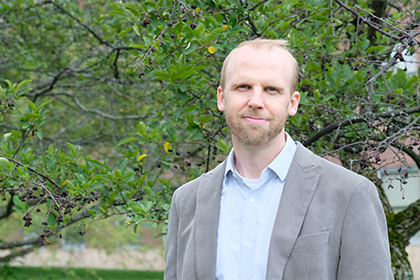Most children are exposed to adversity by the time they reach adulthood, but a portion of children stay free of mental illness despite trying circumstances. A recent study led by Professor of Psychiatry William Copeland, Ph.D., and supported by UVM researchers, challenges the notion that childhood resilience is common and explores possible solutions to this crisis via public health initiatives.

UVM researcher offers insights on mental health and resilience
Childhood Adversity, Mental Health, and Long-term Well-being: Insights from Copeland’s Research
Most children are exposed to adversity by the time they reach adulthood, but a portion of children stay free of mental illness despite trying circumstances. Such resilience has been the subject of much research and debate. A recent study led by Professor of Psychiatry William Copeland, Ph.D., and supported by UVM researchers Julia Halvorson-Phelan, B.S., and Ellen McGinnis, Ph.D., alongside Lilly Shanahan, Ph.D., associate professor of psychology at the University of Zurich, challenges the notion that childhood resilience is common. Their investigation indicates that children who appeared resilient during childhood were still at risk of poorer mental health, physical health, and financial outcomes in adulthood. The findings, published in the December 2023 issue of the American Journal of Psychiatry, suggest that focusing on reducing childhood adversity exposures may be more beneficial than promoting resilience alone. By prioritizing the reduction of early adversities, public health efforts could potentially lead to improved long-term outcomes and overall well-being for individuals as they transition into adulthood.
Copeland’s work, titled "Adult Mental Health, Substance and Functional Outcomes of Children Resilient to Early Adversity," highlights the prevalence of childhood adversity and mental health problems, raising questions about the conventional understanding of resilience. Childhood exposure to adversity is widespread and often leads to negative outcomes in adulthood. Mental health issues, including subthreshold cases causing significant impairment, are also common in childhood. These findings challenge the traditional view of resilience as a widespread phenomenon.
The study conducted its research using data from the Great Smoky Mountains Study, which has tracked the experiences of 1,420 children primarily from rural areas in western North Carolina for more than three decades. The participants were interviewed annually throughout their childhood—from ages 9 to 16—and four more times during their adulthood. Researchers used multiple childhood assessments of adversities to create an index of cumulative adversity exposure. They defined children as resilient if they faced multiple adversities but remained free of any mental health problems during childhood.
The main questions addressed in the study are: 1) How common is childhood resilience? and 2) How do individuals defined as resilient during childhood fare in their early adult years in terms of mental health and overall functioning in life domains? The findings shed light on the complexity of resilience and the need to consider multiple adversities and long-term outcomes when studying childhood resilience.
A significant proportion—75 percent—of the sample met the criteria for a psychiatric disorder or exhibited subthreshold psychiatric issues by adulthood, a finding that is consistent with other longitudinal studies of childhood mental health. The more adverse experiences they faced during childhood, the higher the chances of having mental health issues as they matured. Only 12.2 percent of the kids who experienced multiple adversities in their formative years had no manifestation of psychological problems during childhood, demonstrating “resilience.” As they became adults, however, these individuals had a greater risk of anxiety and depression, and they also reported worse physical health and struggled more with finances and education compared to those who had faced fewer adversities during childhood. Interestingly, these formerly resilient individuals didn't show an increased risk for substance problems.
“Our definitions of resilience should reflect the reality,” stated Copeland. “The vast majority of people experience a degree of mental health problems at some point after experiencing multiple adversities. That is normal. Expecting individuals to emerge from those experiences completely unscathed may be setting unrealistic expectation for ourselves and others.”
In conclusion, the research reveals that resilience is uncommon and often temporary. Adversity’s influence persists, even if delayed. The common treatment route—identifying and teaching resilience factors—may have time-limited public health impact. Instead, reducing childhood adversity, like poverty, is a more effective and lasting approach.